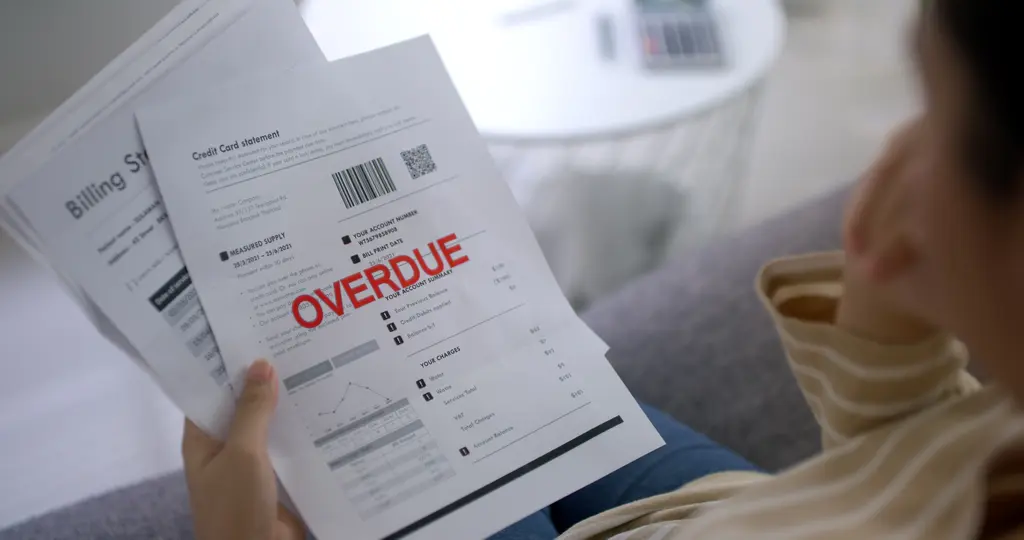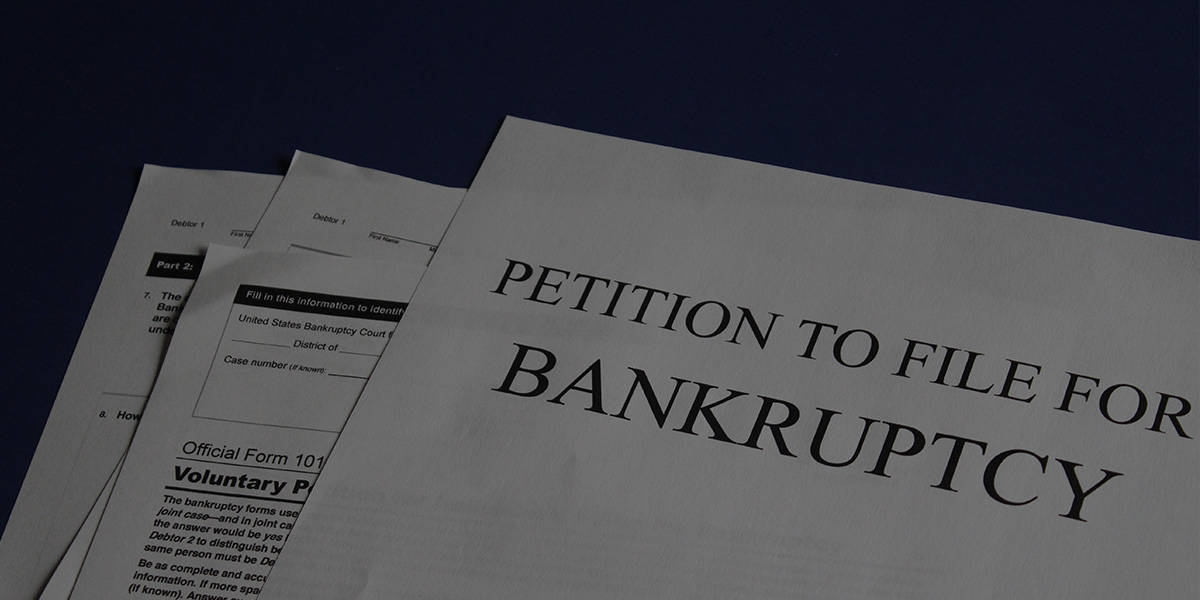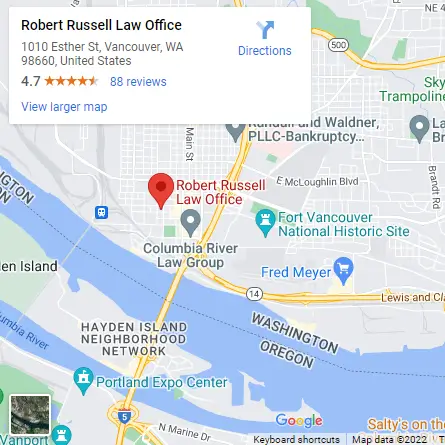A Debtor’s Ability To Pay Debt
People have a lot of questions about the bankruptcy “Means Test”. The “Means Test” was added to the Bankruptcy Code in 2005 by the Bankruptcy Abuse Prevention and Consumer Protection Act (BAPCPA). Generally, the Means Test is used to help determine if individuals with primarily consumer debt should qualify for Chapter 7 relief (a discharge of debt). The idea is that if a potential debtor has the “means” (ability) to repay a significant part of their debt, then they should do so either in a Chapter 13 or directly (outside the protection of the Bankruptcy Code). It is said that an “abuse” of the Bankruptcy Code would occur if such a person with “means” would receive a Chapter 7 discharge.
The Means Test Is A Budget
The Means Test is basically a budget. It states a debtor’s income and expenses. Actually, that’s not true. ;-) It states the average of the debtor’s income for the last six full months just prior to filing. The debtor’s income today could be completely different – higher or lower, but the Means Test uses the last six month’s income average. Also, the Means Test expenses come not from the debtor’s current projected budget, but from (a) national, regional, state and local averages for certain expenses – such as housing, food and transportation and then (b) in part from the debtor’s real world and currently projected expenses – such as child care, medical expenses and tax on income. The Means Test subtracts the allowed expenses from the recent past average income to determine how much money (“disposable income”) a debtor has left over, if any, each month on this “budget”. So, while this budget may or may not reflect a debtor’s current reality, it does make some sense to look at recent actual income and average expenses for certain items.
How Much “Disposable Income” Do You Have?
If the Means Test shows, after deducting expenses from income, that a debtor has enough leftover “disposable income” and, thus, with that income the apparent ability to repay either (a) the greater of 25% of the debtor’s projected general unsecured debt or $7,475 or (b) at least $12,475 (regardless of what percentage that is of the general unsecured debt) then there is a “presumption of abuse“, i.e., a presumption that the debtor makes too much money or, more correctly, has too much left over after deducting reasonable/necessary expenses to qualify for a Chapter 7 discharge. In most cases, if a debtor has $207.92 left over OR, regardless of the amount left over, enough left over to pay 25% of the unsecured debt, then there is likely a presumption of abuse.
Rebutting The Presumption
A “presumption of abuse” does NOT mean that the debtor does not qualify to file a Chapter 7 and obtain a discharge. A “presumption of abuse” simply means that the debtor has to “rebut” the presumption of abuse by showing that the debtor’s ACTUAL current and near-term projected “disposable income” is less than the amount that would lead to an abuse. The debtor rebuts the presumption by providing to the United States Trustee (UST) and/or the court, if needed, evidence of the debtor’s current financial circumstances and that the debtor no longer has ability to repay a significant portion of the debtor’s general unsecured debt. If the debtor proves this point, then the debtor has rebutted the presumption of abuse and will receive a Chapter 7 discharge. The existence of the “presumption” just means the debtor must prove the debtor does not have any significant “disposable income” left over to pay creditors.
Safe For A Discharge If No Presumption?
On the other hand, just because a debtor files a case with “no presumption abuse” on the Means Test, it does not mean that no abuse would result if the debtor were granted a Chapter 7 discharge. For example, if a debtor made zero income in the six months prior to filing, then the income on the Means Test would be below median and there could be no presumption of abuse. However, if that debtor just before filing obtained high paying employment and the debtor now has, for example, $1,000 left over on the current budget after paying reasonable and necessary expenses, then a “abuse” would occur if the debtor would be given a Chapter 7 discharge. In that case, the UST must prove the debtor is not entitled to a discharge (as opposed the debtor who must prove he is entitled to a discharge if there is a presumption of abuse). Having a presumption or not just establishes who has the burden of proof. It’s a little like being presumed innocent until proven guilty. A debtor with a presumption of abuse must prove there is no actual abuse. When there is no presumption of abuse, the UST must prove actual abuse.
Timelines & Deadlines: When Do You Know You are OK?
When a case is filed the Clerk of the Court files, based on the Means Test filed with the petition, a statement that there is or is not a presumption of abuse. If a case is filed with a presumption of abuse, the clerk mails that notice to all creditors within ten days of filing of the petition. FRBP 5008. This is just the start.
Within ten days after the 341 First Meeting of Creditors the UST must file a statement with the court whether the debtor’s case is, in it’s opinion, presumed to be an abuse under section 707(b). See, 11 USC § 704(b)(1)(A). It should be noted that the UST can disagree with the debtor’s assertion in the Means Test that there is no presumption of abuse. Most cases start off without a presumption of abuse. If there is an presumed abuse, most debtors can rebut the presumption with proof of their current lesser financial circumstances. [Practice pointer: A debtor with a presumed abuse should get documents to the UST immediately after filing that support a rebuttal of the presumption. This gives the UST more time to agree with the debtor that there is not actual abuse.]
If the UST filed a statement that the case has a presumed abuse, the UST must, within thirty days following the filing of that statement, file with the court a (a) motion to convert (to 13 or 11 reorganization), (b) motion to dismiss the Chapter 7 or (c) statement was to why the case is no longer determined to be an abuse. 11 USC § 704(b)(2). The last statement is often called a “Statement of Declination”, i.e., the UST’s statement that they decline to seek conversaion or dismissal because of something like: “The presumption of abuse would not arise under current financial circumstances.”
The “good” news, from a Chapter 7 discharge perspective, is that most debtors have income that is below average/median and there is no presumption of abuse or actual abuse. So, in most cases, consistent with the petition Means Test, the Clerk files the statement of no presumed abuse shortly after filing. Personally, in this scenario, I have rarely seen the UST file a Statement of Presumed Abuse within the 10 days following the 341 Meeting, i.e., the UST normally agrees with the debtor that there is no presumption of abuse. In this usual scenario, a debtor is safe on the 11th day past the 341 meeting and there is not presumption of abuse. If there is a UST presumption of abuse (either because the UST agrees or disagrees with the debtor’s petition Means Test), a debtor is safe when the UST files the “Statement of Declination” within 30 days of the prior statement and explains that the debtor has satisfactorily rebutted the presumption of abuse.
If the UST does not find the presumption rebutted, the then the debtor has to respond to the UST’s motion to convert/dismiss. The debtor still has the opportunity convince the UST that no abuse would result. If the UST cannot be convinced, then the matter goes to hearing before the court, and the court might be convinced and find that no actual abuse would result if the debtor received a discharge.
Waiting To File
In most cases there is no presumption of abuse and a debtor has nothing to worry about. If a debtor has had significant income in the six months prior to filing and it looks like there might be a presumption of abuse, delaying a bankruptcy filing might take care of the issue. If the debtor waits, they might find similar well-paying income and then file a Chapter 13 if they need bankruptcy protection. If they have not found well-paying employment, then the delay in filing means their income over the last six months is now lower and, likely, there is no longer a presumption of a abuse.
Is Your Income Above Median?
You can find out if you income for the last six months is above or below median by looking here. [You can also take a look at allowed expenses here.] Take your gross income (before tax, etc) for the last six full months, double it to get a 12 month gross income figure, and compare the resulting figure to the amount on the chart for the applicable state. As of the date of this blog, the gross median income in Washington is as follows: $52,996 (1 person), $63,409 (2 people), $72,286 (3 people), $84,970 (4 people) and add $6,300 for each person after four. For Oregon it is a little less, as follows: $44,779 (1 person), $55,568 (2 people), $60,693 (3 people), $70,812 (4 people) and add $6,300 for each person after four. If your income is below average, then you will never start off with a presumption of abuse. If your income is above average, but you have reasonable and necessary expenses above average, then may you be able to avoid a presumption of abuse. (Stated another way, yes, your income can be above average and yet you might not have a presumption of abuse.) You just need to have someone experienced prepare your Means Test.
Free Consultation
Yes, if your income is or was recently above median, this can get complicated. It is a good thing that we offer a free consultation to discuss your options. Just let us know if we can help.
Sources
11 USC §707 – Dismissal of a case or conversion to a case under chapter 11 or 13
(b)((2)(A)
(i) In considering under paragraph (1) whether the granting of relief would be an abuse of the provisions of this chapter, the court shall presume abuse exists if the debtor’s current monthly income reduced by [allowed expenses], and multiplied by 60 is not less than the lesser of—
[* Note: Adjusted periodically upward.]
FRBP 5008 – Notice Regarding Presumption of Abuse in Chapter 7 Cases of Individual Debtors
If a presumption of abuse has arisen under §707(b) in a chapter 7 case of an individual with primarily consumer debts, the clerk shall within 10 days after the date of the filing of the petition notify creditors of the presumption of abuse in accordance with Rule 2002. If the debtor has not filed a statement indicating whether a presumption of abuse has arisen, the clerk shall within 10 days after the date of the filing of the petition notify creditors that the debtor has not filed the statement and that further notice will be given if a later filed statement indicates that a presumption of abuse has arisen. If a debtor later files a statement indicating that a presumption of abuse has arisen, the clerk shall notify creditors of the presumption of abuse as promptly as practicable.
11 U.S. Code § 704 – Duties of trustee
(b)
(1) With respect to a debtor who is an individual in a case under this chapter—
(2) The United States trustee (or bankruptcy administrator, if any) shall, not later than 30 days after the date of filing a statement under paragraph (1), either file a motion to dismiss or convert under section 707 (b) or file a statement setting forth the reasons the United States trustee (or the bankruptcy administrator, if any) does not consider such a motion to be appropriate, if the United States trustee (or the bankruptcy administrator, if any) determines that the debtor’s case should be presumed to be an abuse under section 707 (b) and the product of the debtor’s current monthly income, multiplied by 12 is not less than—






